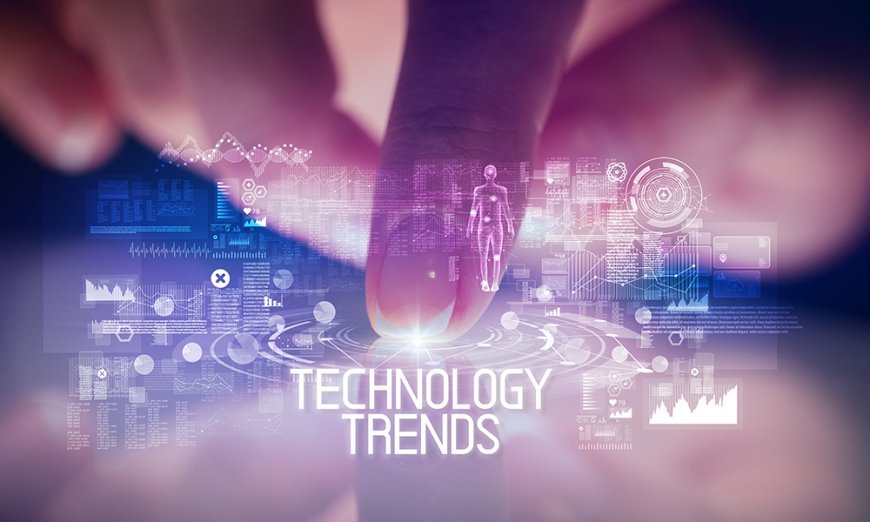Top 10 Tech Trends to Watch in 2025
Explore the top 10 tech trends expected to shape industries, redefine innovation, and transform our daily lives in 2025.
Technology continues to evolve at lightning speed, revolutionizing the way we live, work, and interact. As we approach 2025, the digital transformation wave is expected to gain even more momentum. Businesses, governments, and individuals will need to adapt to new tools, platforms, and philosophies powered by cutting-edge innovations. From AI and quantum computing to green tech and the metaverse, the future promises incredible breakthroughs. Here are the top 10 tech trends to watch in 2025 that will define the next chapter of global advancement.
1. AI-Powered Everything
Artificial Intelligence is no longer limited to smart assistants and chatbots. By 2025, AI will be deeply embedded into virtually every industry, from healthcare and finance to retail and agriculture. We're seeing the rise of autonomous systems, predictive analytics, and generative AI across all sectors. AI will enhance human capabilities, streamline operations, and open doors to innovations previously unimaginable.
Key developments in AI to watch:
- AI-generated content and media
- Predictive healthcare diagnostics
- Smart supply chain automation
- Hyper-personalized customer experiences
2. Quantum Computing Breakthroughs
Quantum computing has long been considered a distant frontier. But 2025 is poised to mark significant progress in real-world applications. These machines process data in qubits, enabling them to solve problems far beyond the capacity of traditional computers. Industries such as pharmaceuticals, materials science, and finance will benefit the most from quantum advancements.
Expect these quantum shifts:
- Drug discovery and molecular simulation acceleration
- Optimized investment strategies and risk management
- More accurate climate modeling
- Enhanced cryptographic security
3. The Rise of 6G Technology
5G has just started to become mainstream, but research into 6G is already well underway. By 2025, early pilots and standards will be shaping the next generation of ultra-fast, ultra-low-latency wireless communication. 6G promises speeds up to 100x faster than 5G, paving the way for real-time holograms, seamless extended reality (XR), and hyperconnected smart cities.
Emerging features of 6G:
- Peak data rates over 1 Tbps
- AI-native wireless systems
- Integration with satellite internet
- Smart infrastructure and devices
4. Sustainable and Green Tech Innovation
Sustainability will take center stage in 2025, with green technology playing a pivotal role. From carbon capture to renewable energy optimization and climate-focused AI tools, the tech sector is innovating to reduce environmental impact. Clean tech startups and corporate ESG commitments will drive unprecedented investment and development in this area.
Green tech trends gaining momentum:
- AI-driven energy efficiency solutions
- Smart grids and decentralized power
- Carbon-negative materials and manufacturing
- EV infrastructure and battery breakthroughs
5. The Expansion of the Metaverse
The metaverse is transitioning from concept to reality. In 2025, more immersive virtual worlds will blur the lines between physical and digital spaces. Education, remote work, e-commerce, entertainment, and social interaction will all evolve within interconnected metaverse ecosystems. Businesses are already building digital twins, hosting virtual meetings, and launching VR-based services.
Metaverse developments to track:
- AR/VR headsets with spatial computing
- Virtual real estate and asset ownership
- Mixed reality collaboration tools
- Digital identity and avatar evolution
6. Edge Computing at Scale
Cloud computing remains essential, but edge computing is becoming just as critical. By 2025, more data processing will happen near the source—on devices, sensors, and local servers. This reduces latency, improves performance, and enables real-time decision-making. Edge computing supports next-gen applications such as autonomous vehicles, smart factories, and telemedicine.
Edge computing benefits in 2025:
- Lower latency for mission-critical applications
- Reduced cloud dependency
- Greater data privacy and control
- Faster insights from IoT devices
7. Cybersecurity Powered by AI
As digital threats become more complex, cybersecurity will rely increasingly on AI. Traditional defense systems are no match for modern attacks powered by automation and social engineering. In 2025, AI-driven cybersecurity will predict, detect, and neutralize threats in real time, reducing response times and improving resilience.
AI cybersecurity advancements to note:
- Real-time anomaly detection
- Adaptive authentication systems
- Automated threat response
- Zero-trust architecture at scale
8. Human Augmentation Technologies
Human augmentation is the use of technology to enhance human abilities—physically, cognitively, and emotionally. In 2025, we’ll see rapid growth in wearable AI, brain-computer interfaces (BCIs), and bio-integrated sensors. These tools will help people manage health, improve productivity, and enhance capabilities in high-performance jobs.
Notable augmentation technologies:
- Neural implants and BCIs for communication
- Exoskeletons for industrial and medical use
- Wearable tech for cognitive enhancement
- Biometric monitoring for real-time health insights
9. Autonomous Everything
From vehicles to drones and robotic process automation (RPA), autonomy is scaling up. In 2025, industries will adopt autonomous systems that learn, adapt, and self-correct. Logistics, agriculture, security, and customer service will be revolutionized by machines that reduce the need for human intervention while increasing accuracy and speed.
Autonomous solutions on the rise:
- Self-driving delivery and transport fleets
- AI-powered RPA for back-office operations
- Precision agriculture with autonomous drones
- Automated warehouse and inventory systems
10. Decentralized Digital Ecosystems
Blockchain and decentralized technologies are redefining ownership, privacy, and transparency in 2025. Beyond cryptocurrencies, distributed ledger systems are now powering digital identity, supply chain tracking, and decentralized finance (DeFi). Web3 applications will continue to gain traction, offering users more control over their data and interactions.
Key areas of decentralized innovation:
- Blockchain-based identity systems
- Peer-to-peer finance and smart contracts
- Transparent supply chain tracking
- Decentralized content platforms and DAOs
Conclusion
2025 will be a transformative year for technology. With each advancement—from quantum computing and AI to sustainability and decentralization—comes new opportunities and challenges. Individuals and organizations that stay ahead of these trends will unlock competitive advantages and pave the way for a more connected, efficient, and intelligent future. The fusion of human creativity and machine capability is set to redefine what’s possible across every industry.
What's Your Reaction?








